Environment
Everything you need to know to go green the easy way
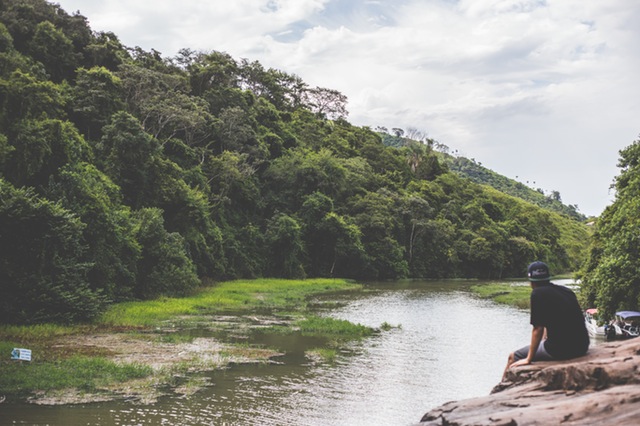
“Going green” has become somewhat of a cool thing these days. It’s more popular than ever to claim you’re a vegan, recycle, purchase energy saving light bulbs, and more in an effort to save the planet. But just because it’s a trend to change your lifestyle doesn’t mean you can’t actually take it seriously. We have put together a complete guide to going green the easy way. You don’t have to completely change your life as you know it in order to make a difference. Not only does making small changes like these help the earth and everyone living on it, it enriches your mind and increases your appreciation for life.
Just about every aspect of your life can be transitioned into being more sustainable and good for the earth. To make it as simple as possible, we have put everything you can do into categories based on everyday life. It’s possible to go green with minimal effort. Even doing just a few of these things will make a difference, so give whatever jumps out at you a try.
Composting
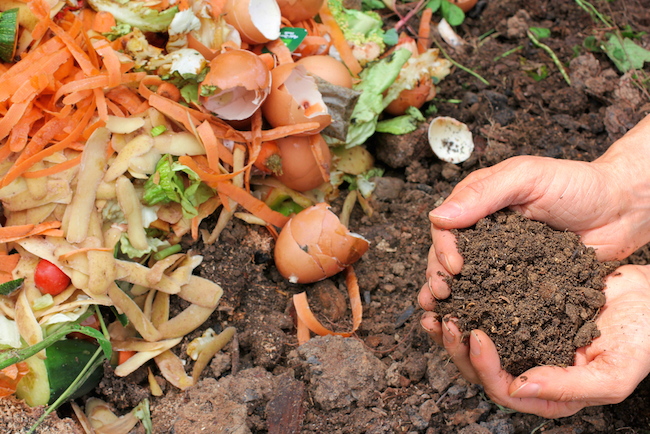
Image: Shutterstock/Marina Lohrbach
Composting is the best way to get rid of organic waste without it all ending up in a landfill. There are a few key components to building the perfect compost area. First, begin by finding a good area to place the compost. You can build a container out of wood or fencing to keep all of the compost in one place, or you can simply designate a corner in the backyard to put everything. You can even buy compost tumblers that periodically stir up the material to help it break down faster. This is not necessary, but if you plan on really getting into composting it could help speed up the process. Also, choose a place in your garden or yard that sees a lot of sunlight to increase the temperature as much as possible. This will aide with the decomposing process.
Next, figure out what you should put into the compost. Brown and green matter work best, which includes shredded newspaper, wood chips, leaves, kitchen waste and grass clippings. Try to avoid adding in any meat, dairy or fish because these materials can attract pests. No one wants unexpected visitors in their backyard. When you’re done with a meal or cooking, simply take out the leftover scraps to the compost. Simple as that.
Maintenance of your compost is really basic and requires almost no effort. One small suggestion though is to use a pitchfork or shovel to mix up the compost about once a week to make sure everything is blending well together. That’s pretty much it. After a few months, you should find some healthy, nutrient rich soil to enrich your garden with.
If you don’t live in a house with a backyard to create a compost in, check out this video to see how you can easily compost in small spaces.
Shopping bags
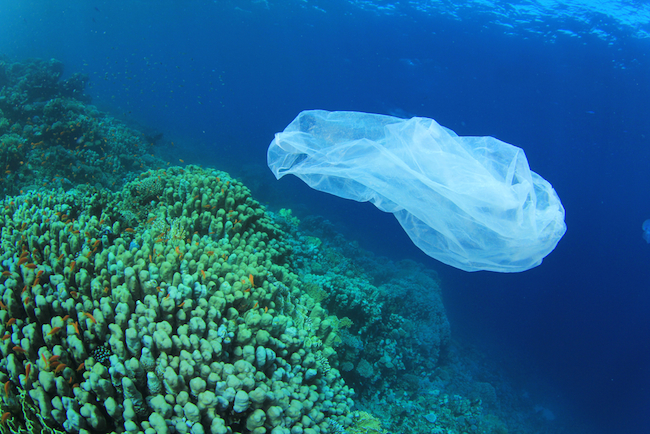
Image: Shutterstock/Rich Carey
More than one trillion plastic bags are used every year around the world. This huge amount of waste builds up in landfills and contaminates the oceans, killing animals and fish who mistake them for food or suffocate on them. Your quick trip to the grocery store damages the environment more than you know. Purchase some reusable grocery bags and keep them in your car for whenever you go shopping, or even simply need a bag. The amount of plastic grocery bags (and money) you will be saving will reach more than 1,000 if you continuously do this. Who ever said one person can’t make a difference?
Rain barrels
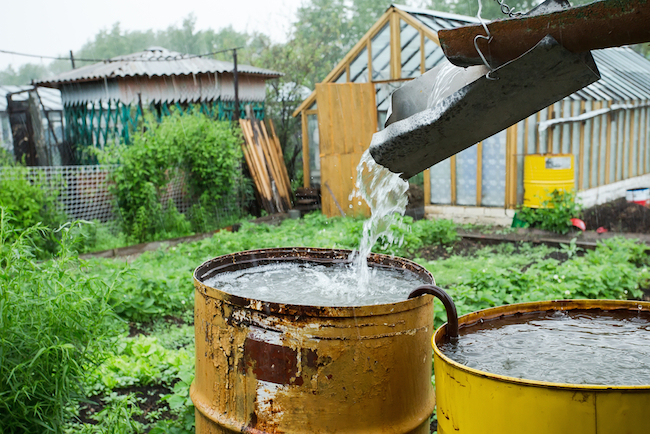
Image: Shutterstock/Moiseenko Design
Installing rain barrels outside your home can help you save money and recycle water by basically doing nothing but letting it rain. Simply purchase large food-grade barrels to collect the water in, and place them under the downspout that comes from the roof. Remember that direct sunlight into the barrel may encourage algae growth, so fix a lid on the top to prevent contaminating your water. Once you have a full barrel (yay!) you can begin using the supply of water for various things around your house. This water isn’t clean enough to drink or use for cooking without properly disinfecting it. However, it’s perfect to use to wash your car, clean off the driveway, water the plants, and anything else you can think of outside.
Recycling clothes
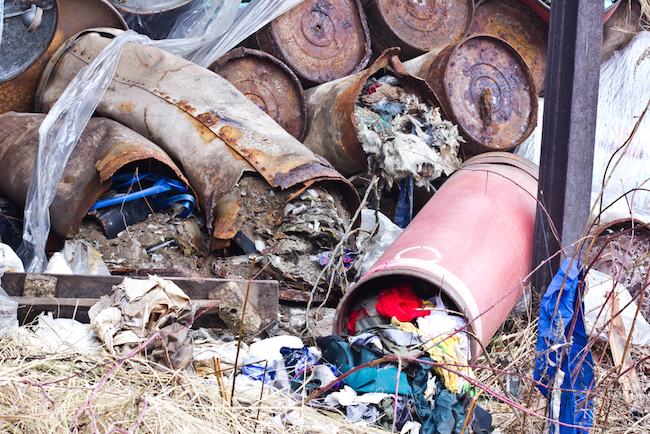
Image: Shutterstock/Pawel Michalowski
We all purge our closets every once in a while and end up getting rid of clothes we never wear. There is no reason to throw them away when they can be worn by someone else, or broken down and used in other materials. Taking your old clothes to a thrift shop is a great place to start. They will begin by attempting to sell them at the highest price possible, and if they can’t sell they will then be donated to other places and maybe even overseas. No matter what, someone will get use out of your clothes. If your items are not in good enough condition to be worn again, you can take them to a recycling center and they could be turned into anything from carpet padding to playgrounds. Check out this full list of what can be recycled and where to find a donation center.
You can even take in clothes to the retail store you bought them from. Nike, Patagonia and H&M are just a few that take old clothes and recycle them for you.
If you happen to tear or break something on an item of clothing, invest in a simple sewing kit to repair it. Repairing your favorite garments will prevent you from having to buy more, and also reduce the waste from the broken item.
Put plants around your home
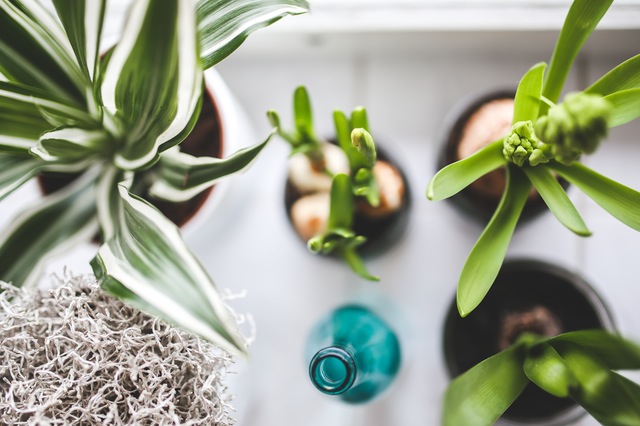
Having plants around your home not only looks beautiful, but it also cleans the air naturally. No need for noisy and energy-sucking air filters, plants will do all the work for you. Some popular plants that get the job done are ferns, peace lilies, golden pothos, gerber daisies, snake plants and aloe vera.
Transportation
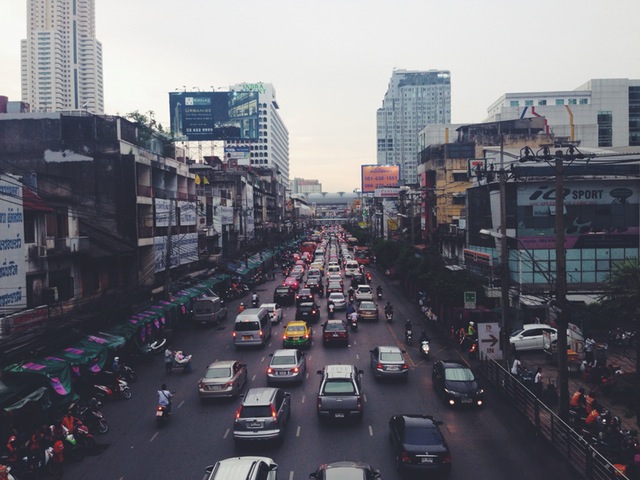
Most people travel by car at least once a day. If you’re serious about reducing your carbon footprint, investing in an eco-friendly car will help immensely. The #1 most eco-friendly car in 2016 according to cars.com is the 2016 Toyota Prius c. The amount of money you save on gas with this thing will blow your mind, so give switching over a thought.
Carpooling is also a great way to cut down carbon dioxide emissions from your car. Ask everyone you know to carpool: friends, family members, co-workers and a random stranger you meet on the street (okay, maybe not a total stranger). Regular sharing of vehicles to the same destination could make a huge difference, especially if we all do it.
The best option: walk. Okay, obviously this isn’t always possible, but do it whenever you can. A little exercise never hurt anyone either.
Light bulbs

Slowly replacing the conventional lightbulbs in your home with LED lights will save you a ton of money, and be better for the environment. LED light bulbs use 75% less energy than regular ones, and they also create a lot less heat. While they are considerably more expensive than conventional bulbs, in the long run you will be saving more money on your electric bill and how often you need to buy bulbs. It’s worth the investment.
Buy a water bottle
Using a plastic or glass reusable water bottle is one of the easiest things you can do to reduce pollution. Just like plastic bags, plastic water bottles litter our earth left and right, simply for one serving of water that you can drink from a reusable container. You can even buy bottles that have filters built into them so you know you’re always drinking clean water.
Coffee

If you’re addicted to coffee like me, it seems hard to make any changes in the most important part of your morning routine. However, just some small adjustments can go a long way. Purchase fair trade and organic coffee to ensure the way it’s made is ethical and sustainable. If you buy coffee at a cafe in the mornings, consider bringing your own mug or coffee cup for them to fill up. Some stores offer discounts if you bring your own in, so everyone wins.
In the kitchen
The kitchen generates the most waste out of all the rooms in your house. There are many things you can do around your kitchen to cut down this waste and the use of harmful toxins. First, stop buying paper plates, napkins and paper towels. There is no need for all the waste from using these items only once. Invest in a few sets of good glass plates, bowls, utensils, dish rags and cloth napkins. All you have to do is wash them, and they will be softer on your skin too.
Avoid washing your dishes by hand and pre-rinsing them. Dishwashers use much less water than washing in the sink, so try to limit the number of times you run the faucet. This could also save you money on soap and your water bill.
Buy products with less packaging to cut down on the amount of trash you throw away. With that being said, recycle whenever you can. The investment is worth the planet.
Eat less red meat (or meat in general). Cattle release a huge amount of methane gas which is more potent than carbon dioxide. In addition, livestock manure is the source of 2/3 of man-made nitrous oxide, which is 300 times more potent than carbon dioxide. Basically, the livestock industry is ruining the environment. Cut down on consuming meat as much as you can. If you won’t cut it out completely, bring it down to only eating meat in one meal a day, and try to go at least a day in the week without it. This makes a bigger difference than you think.
Don’t waste food! About 18% of the food we buy goes to waste, so only make what you know you are able to eat. If you don’t finish a meal, save it as leftovers for a great lunch or even dinner the next day. When at the grocery store, only buy what you will eat in time, and be careful of foods that will rot quickly. Plan as far ahead as you can when buying ingredients.
Cleaning products
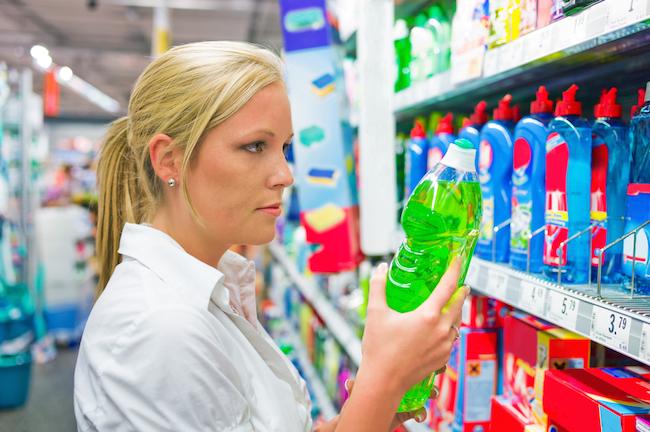
Image: Shutterstock/Lisa S.
Currently, there is no regulation on chemicals used in the make up of household cleaning products. Companies that make these products do not have to meet any sort of safety standards before introducing them to the market for sale to people just like you and I. In fact, the average household cleaner contains about 62 toxic chemicals. These ingredients have been linked to problems such as asthma, cancer, reproductive disorders, hormone disruption and neurotoxicity. Why would you want to spread that around your home?
Toxins like phthalates, perchloroethylene, triclosan, ammonia, 2-butoxyethanol, chlorine and so many more. Many of these have been classified as carcinogens, and they’re not just bad for your body but also the environment. Make sure to be aware of the packaging, just because it says “green” on it doesn’t mean it’s actually natural or safe. Pay attention to the ingredients and specifics on the packaging.
Making your own cleaning products is the easiest way to ensure you’re not exposing yourself or your environment to harmful chemicals. Sometimes, natural products actually clean better than store-bought products. Here are just a few DIY ideas.
All-purpose cleaner: Mix 1/2 cup of vinegar and 1/4 cup baking soda into 1/2 gallon of water. Add essential oils if you want a fresh scent.
Laundry booster: Combine 2 cups washing soda and 1/4 cup hydrogen peroxide in a mixing bowl until you get a sand-like texture. Keep in the laundry room in a small jar and add a bit to each load of laundry to help it clean your clothes naturally.
Toilet bowl cleaner: Combine 1/2 cup baking soda and 1/4 cup liquid castile soap in a large bowl (add essential oils for pleasant smell and extra antibacterial action). Add 1/4 cup hydrogen peroxide, mix, then add 1 cup of hot water slowly until the mixture is smooth. Then, pour in 1/4 cup vinegar. Use a funnel to put the cleaner into a squeeze bottle, and you’re ready for a clean toilet.
Pine sol: Mix together 1 tablespoon of liquid castile soap, 4 cups warm water, and 10-15 drops of essential oils. Even add a sprig of rosemary if you want a pretty extra touch.
Shopping list
In order to begin making small changes in your life toward the direction of being more green, you might have to purchase a few things, as we mentioned above. The cost of these items will pay for themselves over and over if you continue this lifestyle, so why not take the steps?
- Compost tumbler
- Reusable grocery bags
- LED light bulbs
- Fair trade and organic coffee
- Liquid castile soap
- Spray bottles
There are many more ways to go green in every aspect of your life. Let us know any tips you have to leading a greener life.





0 comments